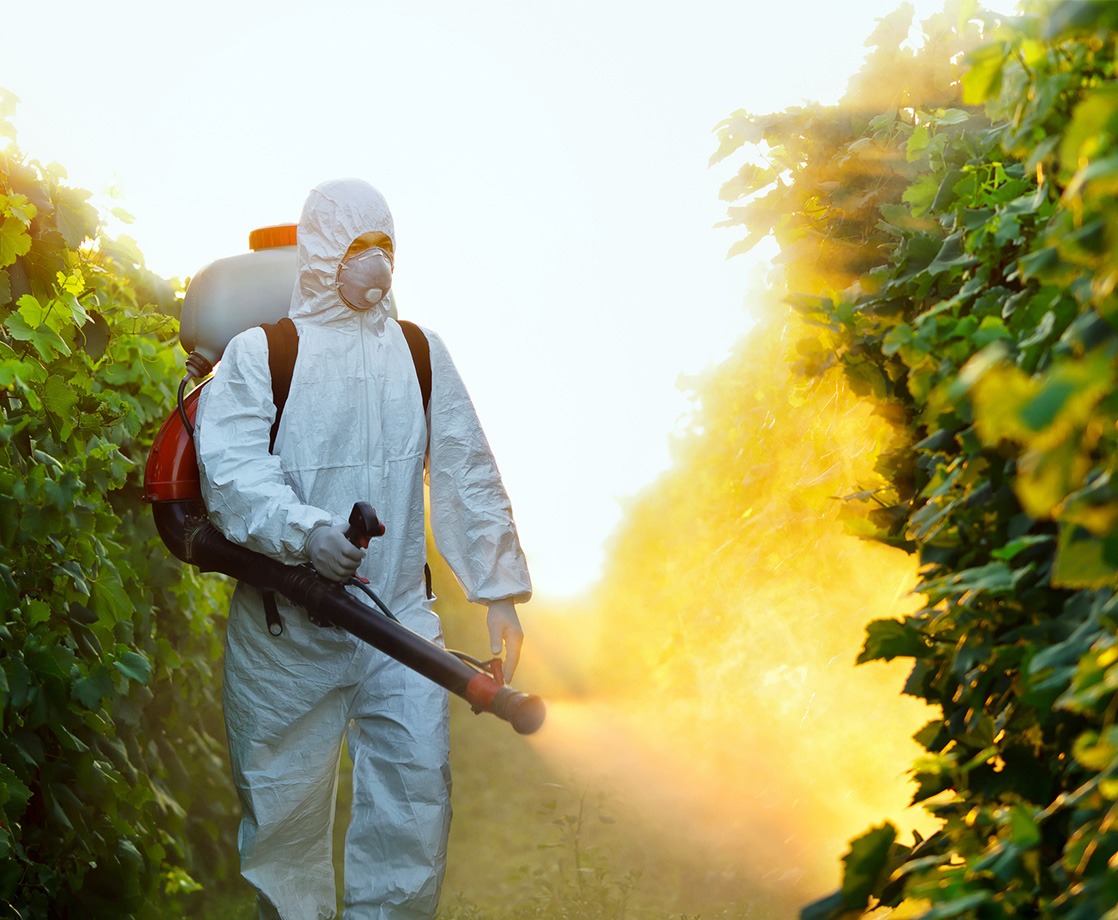Disclaimer: This column is written for educational purposes only. It does not provide specific legal advice and does not create an attorney-client relationship. This column should not be used as a substitute for competent legal advice from a licensed attorney in your state.
Your cannabis is only as good as it is safe. You may have heard some troubling stories about people who have gotten really sick after ingesting marijuana contaminated by mold or pesticides. Are states doing enough to require and regulate pesticide testing? Testing requirements vary widely and are severely lacking in many states. The most notorious accounting of how pesticides in cannabis production are (or aren’t) regulated and tested is an investigation conducted by Noelle Crombie in 2015. Her piece for The Oregonian/OregonLive, “A Tainted High,” exposed how, amongst many frightening finds, marijuana that failed pesticide screening was still being sold to medical patients in Oregon. Crombie bought cannabis at several local Oregon dispensaries and had products independently tested. Cancer-causing pesticides were found in nearly all of the samples. This week we’re looking at cannabis safety, measures states have in place to ensure products are tested and labeled, and how you can protect yourself from ingesting bad weed.
When Cannabis Makes You Sick
“Pesticide laced pot” led to a health scare for California medical marijuana patient Todd Gullion that landed him in the emergency room with serious neurological symptoms. According to Todd, his hands, arms and feet all went numb after ingesting his meds. Scientists say that inhaling marijuana contaminated by pesticides is particularly concerning because it’s “like injecting that pesticide right into your bloodstream” — which can damage the kidneys, liver and other organs. Acute pesticide exposure can cause a wide range of symptoms, from difficulty breathing, dizziness, nausea/vomiting, to more severe symptoms such as loss of consciousness and convulsions. Nobody wants to have an experience like Todd’s, especially if their immune system is vulnerable.
Aside from pesticides, moldy marijuana can also cause concerning health issues. Even limited exposure to molds and mildews is enough to cause illness or exacerbate allergies. Heavy or acute exposure can cause headaches, weakness, brain fog, chest pain and changes in mood. Those with weak immune systems are more likely to contract an infection such as pneumonia which can spread to other parts of the body. Unfortunately, mold may not be visible to the naked eye, even when small traces are present.

Image via iStock Photo
Pesticide and Contaminant Testing Laws
Not surprisingly, there is a no federal pesticide standard for cannabis. Each state is on its own to establish testing requirements that regulate pesticides and contaminants in marijuana products. Some states have no required safety testing whatsoever. Others only have potency testing requirements. Still others have some pesticide and contaminant testing requirements, but they fail to prohibit pesticides that are recognized by the federal government as cancer-causing substances. Let’s take a look at the marijuana product safety landscape in some of the states that have been at the forefront of marijuana legalization:
Colorado — 2015 was a rough year for Colorado. The state saw 19 marijuana and marijuana product recalls in 19 weeks. Over 100,000 plants were put on hold due to pesticide concerns. Cultivation facilities saw stepped-up inspections and many independently commissioned lab tests were conducted on popular marijuana products. In October 2015, the state proposed new rules that would place more restrictions on which pesticides can be lawfully used to grow marijuana. Notably, Colorado’s governor issued an executive order requiring that any marijuana found to have been grown with prohibited pesticides be destroyed. Meanwhile, the recalls continue to roll in, with several dozen more in 2016 and 6 recalls so far in 2017.
Now, under Colorado Department of Revenue Rule 1 CCR 212-2, marijuana cultivators are required to establish standard operating precludes that, at a minimum, include when, and the manner in which all pesticides are applied during the cultivation process. Effective July 1, 2016, Colorado regulations require that all medical marijuana and marijuana products come with a label listing all nonorganic pesticides, fungicides, and herbicides used during cultivation.
Oregon — In 2015, Noelle Crombie’s article exposed Oregon’s lack of proper testing standards for its medical marijuana products. She believes that a combination of “lax state rules, inconsistent lab practices and inaccurate test results” allowed unsafe product to enter the market. Now, Oregon requires all medical and recreational marijuana to be tested by a state-approved lab for the presence of pesticides in “usable marijuana” plants and extracts/concentrates. Usable marijuana that fails pesticide testing must be destroyed. Concentrates or extracts that fail pesticide testing can be re-tested if all useable marijuana used to make the concentrate/extract passed pesticide testing. A failure on a retest means the item must be held for destruction. Pesticide testing is not required for cannabinoid suppositories, topical, or transdermal patches.
California — Prior to MCRSA in late 2015 and AUMA in 2016, California had no mandatory quality assurance or pesticide testing whatsoever. Last month, California decided merge its medical and recreational cannabis regulations in order to regulate both under the same regulatory scheme. In May, the Bureau of Medical Cannabis Regulation issued proposed rules of pesticide testing. If approved, these rules will require labs to test “medical cannabis goods” for the presence of “residual solvents and processing chemicals; pesticides; microbiological impurities; mycotoxins; water activity and moisture content; filth and foreign material; and heavy metals.” The proposed rules include a chart of prohibited pesticides and the maximum acceptable detection level for each pesticide for edibles, flower, and “other processed cannabis.” They also define the maximum acceptable levels of several different types of aspergillus (mold). It’s currently unclear whether these testing requirements will also apply to recreational cannabis products.
Washington — As recently as 2015, pesticide testing was optional, but not required, under Washington Administrative Code 314-55-102(b). In order to prevent toxic levels of pesticides in its marijuana products, Washington completely overhauled its pesticide program in 2015 and adopted recall rules in 2016. Now, under WAC 246-70-050(1)(b), pesticide testing is required in certain circumstances, such as for all marijuana flowers at the time of harvest, and extracts and concentrates intended for retail sale. The state requires producers and processors to use only state-approved pesticides and requires producers selling products made with pesticides to include a statement of which pesticides were used. Products found to have traces of prohibited pesticides will fail the pesticide screening and must be destroyed.
Tips to Protect Yourself
As a consumer, you rely heavily on businesses to test products you buy and consume and on state and local regulators to hold those businesses accountable when their products make you sick. But what can you do to protect yourself? Here are a few tips to reduce your risk of consuming contaminated cannabis:
-
Buy lab-tested cannabis from a regulated access point.
-
Pick cannabis that smells delicious to you, that don’t have “musty undertones.”
-
Don’t pick cannabis that has a wet, grassy scent or feels damp (it likely was not cured properly).
-
Store your cannabis in air-tight containers in a dark, dry (and preferable humidity controlled) environment.
-
Examine your cannabis before consuming, looking out for a musty smell and fuzzy white or gray hairs on buds.
For more on Cannabiz Confidante, visit the anonymous cannabis lawyer's website here











